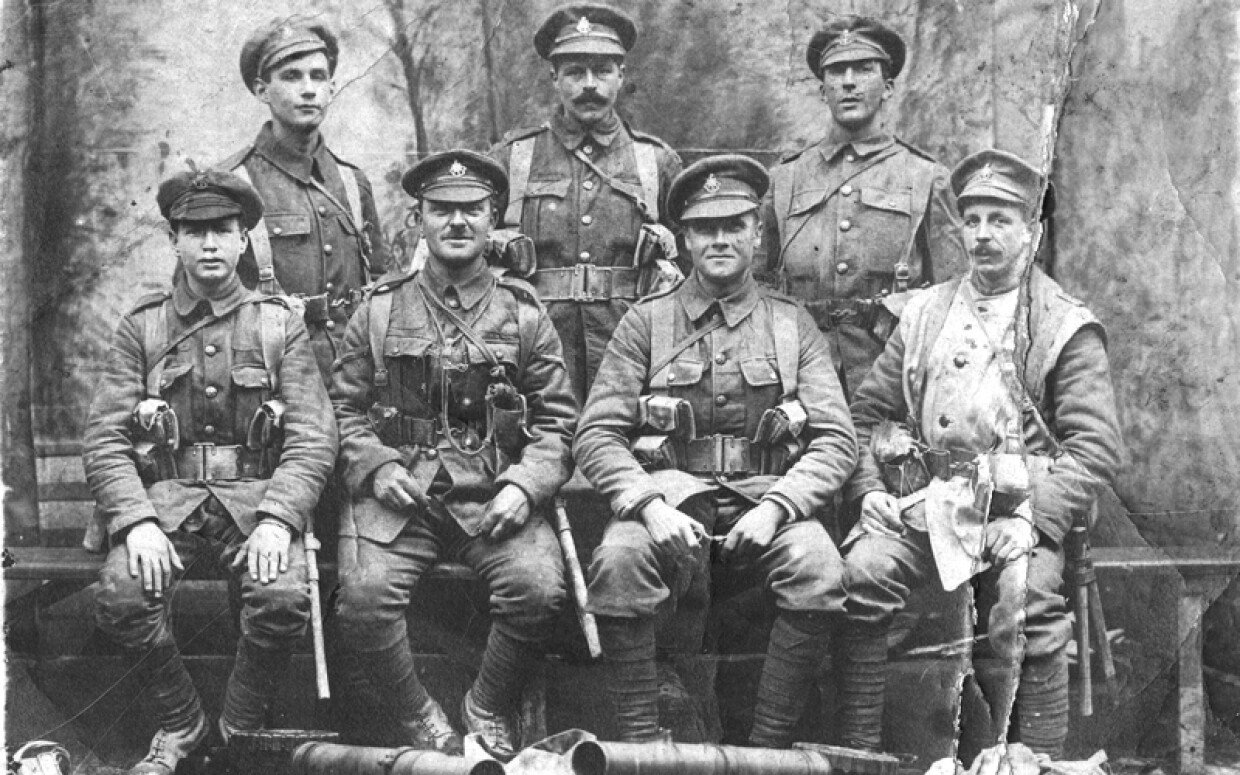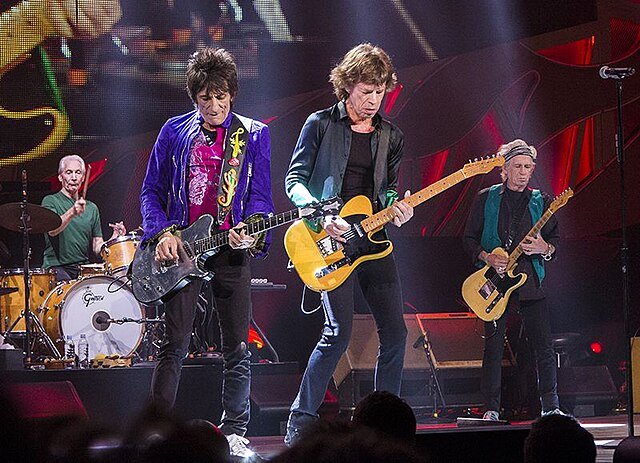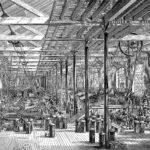The term “Lost Generation” refers to a group that came of age during World War I. This generation faced unique challenges and left a lasting cultural impact.
Their experiences shaped literature, art, and society, influencing the world profoundly. During the early 20th century, the Lost Generation emerged amid global turmoil. They were disillusioned by war and its aftermath, searching for meaning in a fractured world. Writers like Ernest Hemingway and F.
Scott Fitzgerald captured their struggles and aspirations in timeless works. This generation questioned traditional values, seeking new ways to express their identity. Their contributions continue to resonate, offering insights into human resilience and creativity. Understanding the Lost Generation helps us explore how historical events shape personal and collective identities. Dive into their stories to uncover lessons that remain relevant today.
Origins Of The Lost Generation
The Lost Generation emerged after World War I, marked by disillusionment and a search for meaning. Influenced by cultural upheaval, they questioned traditional values, reflecting a world changed by conflict. Writers like Ernest Hemingway and F. Scott Fitzgerald captured this era’s spirit through their works, illustrating a generation’s struggles.
The term “Lost Generation” refers to a group of writers and artists who came of age during World War I and the subsequent years. This generation was marked by a profound sense of disillusionment and a quest for meaning in a world that seemed to have lost its bearings. Understanding the origins of this cultural movement offers a window into a time of significant change and upheaval.
Historical Context
World War I was a pivotal event that shaped the Lost Generation. The war’s brutality and massive loss of life left a deep scar. Many young men returned home to find a society that had changed dramatically.
The post-war period was marked by economic uncertainty and societal shifts. Traditional values were questioned, leading to a widespread feeling of alienation. Have you ever wondered how such a transformative event could reshape individual and collective identities?
As you explore the literature and art of this era, you’ll notice a recurring theme of searching for purpose. This search was not just a personal journey but a collective one, reflecting the broader historical context.
Cultural Shifts
The 1920s, often called the Roaring Twenties, brought significant cultural changes. There was a push towards modernity, with jazz music, flapper fashion, and the rise of consumerism. These shifts created a new cultural landscape that both fascinated and bewildered the Lost Generation.
Writers like Ernest Hemingway and F. Scott Fitzgerald captured this cultural milieu in their works. Their stories often depicted characters grappling with feelings of disconnection and longing for something more.
Imagine living in a world where everything you once knew felt outdated. Wouldn’t you too question the norms and seek something different? This cultural shift challenged individuals to redefine their values and beliefs.
The Lost Generation’s origins lie in the interplay of historical events and cultural changes. By understanding these elements, you can gain insight into why their works continue to resonate today. How do you think these themes of disillusionment and search for meaning apply to your life?
:max_bytes(150000):strip_icc()/gatsby-5a8acb041f4e13003672e4e7.jpg)
Credit: www.thoughtco.com
Defining Disconnection
In today’s rapidly changing world, a sense of disconnection has become more prevalent, especially among the so-called Lost Generation. This term often refers to individuals who feel adrift in a sea of rapid technological and societal changes. But what truly defines this feeling of disconnection? Let’s explore the underlying factors that contribute to this phenomenon.
Social Isolation
Amidst the hustle and bustle of modern life, many people find themselves more isolated than ever. Have you ever noticed how easy it is to be surrounded by people yet feel utterly alone? It’s a paradox of our times. As community ties weaken, individuals often struggle to find meaningful connections. This lack of social bonds can lead to feelings of loneliness and disconnection.
Imagine attending a social event only to see everyone engrossed in their phones. This pervasive social isolation isn’t just about being physically alone; it’s about feeling emotionally and mentally detached. How often do you engage in genuine conversations without the distraction of screens?
Technological Influence
The rise of technology has reshaped how we communicate, but it also plays a role in deepening our disconnection. Think about your daily routine: how much of your time is spent interacting with screens instead of people? While technology offers convenience, it can also create barriers to real-world interactions.
Social media, for instance, gives the illusion of connection but often lacks the depth of face-to-face interactions. Scrolling through curated feeds can lead to feelings of inadequacy and exclusion. Are we sacrificing genuine relationships for virtual likes and comments? Consider how you can balance your digital and personal lives to foster true connections.
Ultimately, addressing this disconnection involves recognizing these influences and actively seeking ways to reconnect with those around you. What small steps can you take today to bridge the gap and foster a sense of belonging?
Psychological Effects
The Lost Generation experienced profound psychological effects. These effects shaped their worldview and mental state. Living through war and its aftermath left deep scars. The emotional toll was immense, impacting their daily lives.
Mental Health Challenges
Many faced significant mental health challenges. Trauma from war experiences haunted their minds. Anxiety and depression were common among them. They struggled to find peace in a turbulent world.
Post-traumatic stress disorder was prevalent. It affected their ability to live normally. The constant fear and unrest took a heavy toll. Mental health support was limited during that era.
Identity Crisis
An identity crisis was a major issue. The Lost Generation felt disconnected from traditional values. Many questioned their place in a changing society. This sense of alienation was widespread.
They grappled with finding meaning in life. The past seemed irrelevant to the current world. This struggle with identity led to existential questions. Many sought new ways to define themselves.
Economic Consequences
The term “Lost Generation” often evokes thoughts of profound economic consequences. Individuals born during periods of significant upheaval face unique financial challenges. Their economic journey is marked by uncertainty and struggle. This section delves into the economic impact on this generation.
Job Market Impact
The job market for the Lost Generation is daunting. Many members struggle to find stable employment. Jobs are scarce, and competition is fierce. This generation often accepts lower wages. They face limited career advancement opportunities. Unemployment rates among them are higher. Their job prospects are often bleak and unpredictable.
Financial Instability
Financial instability is a major concern for the Lost Generation. Many struggle with debt and savings. They face difficulties with budgeting and expenses. Rising living costs add pressure to their finances. They often delay major life decisions. Home ownership and family planning become distant dreams. Economic uncertainty shapes their financial future.
Social Dynamics
The Lost Generation faced unique social dynamics. These dynamics shaped communities and families. They influenced how people lived and interacted. The era brought challenges and changes. Understanding these dynamics helps us see historical impacts.
Community Breakdown
Communities struggled during this time. Economic hardships were widespread. People moved frequently seeking better opportunities. Bonds between neighbors weakened. Shared community events became rare. Trust among community members declined. Social gatherings were less frequent and smaller. Isolation increased as social ties faded.
Family Structures
Family roles transformed significantly. Many family members worked long hours. This left little time for bonding. Parents often faced stress from financial pressures. Traditional family roles shifted. Women entered the workforce more. This change affected family dynamics. Children had more responsibilities at home. Family connections became strained and complex.

Credit: www.familysearch.org
Artistic Expression
The Lost Generation left a deep mark on art. Artists and writers expressed their disillusionment and search for meaning. This era created a rich tapestry of literary and visual art. Both forms reflected the uncertainty of the post-war world. Their works continue to inspire and challenge audiences today.
Literary Movements
The Lost Generation included many famous writers. Ernest Hemingway and F. Scott Fitzgerald were among them. They shaped a new literary style. Their writing was sparse and direct. It focused on themes of loss and alienation. These authors captured the spirit of their times. Their stories often portrayed characters seeking purpose. They highlighted the struggles of adjusting to a changed world.
Visual Arts
Visual artists of the Lost Generation also made an impact. They experimented with new styles and techniques. Many were influenced by the chaos of war. Painters like Pablo Picasso explored abstract forms. Their artwork reflected the fragmented nature of society. The Dada movement emerged during this time. It rejected traditional norms and embraced absurdity. These visual expressions challenged viewers to rethink reality. The legacy of this creative era still resonates in modern art.
Global Perspectives
The term “Lost Generation” often brings to mind the disillusioned youth of the post-World War I era. However, the impact of this generation was not confined to one region. From Europe to America and beyond, the Lost Generation left an indelible mark on the world, each culture interpreting and responding to this phenomenon in unique ways. Understanding these global perspectives can offer valuable insights into how societies process trauma and change.
Comparative Analysis
In Europe, the Lost Generation grappled with the colossal destruction left by the war. Many young people felt a deep sense of betrayal by older generations who had led them into conflict. This led to a widespread questioning of authority and traditional values.
Across the Atlantic, American expatriates in cities like Paris sought refuge from the societal constraints of their homeland. They embraced artistic and literary freedom, redefining cultural norms. The contrast between Europe’s recovery and America’s cultural renaissance highlights how environments shape generational responses.
As a reader, consider how your environment influences your views. Would you have found solace in rebuilding a war-torn home, or would you have sought new beginnings abroad?
Cultural Responses
The cultural responses to the Lost Generation were as diverse as the landscapes they inhabited. In France, the existentialist movement emerged, reflecting the pervasive sense of meaninglessness felt by many. This philosophical shift questioned the very essence of human existence.
Meanwhile, in the United States, the Harlem Renaissance blossomed. African American artists and writers used their work to express the complexities of identity and race. This cultural flowering was a direct response to the disillusionment and search for meaning that characterized the Lost Generation.
Think about how your cultural background shapes your identity. How do you respond to collective experiences of your generation?
These varied responses underscore the adaptability of human societies. By examining the Lost Generation through a global lens, you can better appreciate the resilience and creativity that emerge from periods of upheaval.
Path To Reconnection
The Lost Generation describes those who felt disconnected after World War I. Many struggled with a sense of belonging. Today, people seek ways to bridge the gap. Reconnecting with society offers hope and healing.
Community Initiatives
Local communities play a vital role in reconnecting people. Community centers offer activities that bring people together. Workshops and events encourage interaction and friendship. Volunteering also creates a sense of purpose and belonging. Community gardens offer a hands-on approach to socializing. They teach skills while promoting teamwork and connection.
Technological Solutions
Technology offers innovative solutions for bridging gaps. Online platforms connect individuals across the globe. Social media provides spaces to share experiences and build communities. Virtual reality creates immersive environments for interaction. Apps focus on mental health and offer support networks. They connect those feeling isolated with others who understand.
FAQs
Who Is Considered The Lost Generation?
The Lost Generation refers to those who came of age during World War I. This group includes writers like Ernest Hemingway and F. Scott Fitzgerald. They are known for their disillusionment and cultural rebellion in the post-war era.
Why Was 1883 To 1900 Called The Lost Generation?
The term “Lost Generation” refers to those born from 1883 to 1900 who felt disillusioned after World War I. Many writers and artists expressed feelings of aimlessness and cultural disconnection. This generation faced significant societal changes and struggled to find meaning in a rapidly evolving world.
Why Are Millennials Called The Lost Generation?
Millennials are sometimes called the Lost Generation due to economic instability and lack of traditional career paths. This term reflects their struggle with student debt, job insecurity, and delayed milestones like home ownership. These challenges create a sense of being “lost” compared to previous generations.
What Are The Key Traits Of The Lost Generation?
The Lost Generation is known for disillusionment, cynicism, and a sense of aimlessness after World War I. They challenged traditional values, explored existential themes, and often felt disconnected from society. This group included notable writers like Ernest Hemingway and F.
Scott Fitzgerald, who expressed these traits in their literary works.
Conclusion
The Lost Generation’s struggles teach us valuable lessons. Their journey shows resilience. They faced a rapidly changing world. Many felt disconnected and disillusioned. Yet, they found ways to express themselves. Through art, literature, and music. These expressions gave them a voice.
We can learn from their experiences. By understanding their challenges, we gain insights. Insights into our own lives. Their stories remind us to find meaning. Even in tough times. We see the importance of community and creativity. Their legacy lives on.
Inspiring future generations. Let’s cherish their contributions. And strive for a more connected world.







